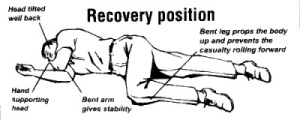Ships use alot of equipment that generates heat, a condition-changing effect which not only impacts surrounding environment but seafarer health directly. Despite awareness and prevention measures placed by the vessel safety officers, seafarers still suffer from health issues either due to carelessness or lack of control on incidents. Firstly, thermal/heat risks associate with extreme ambient temperatures, followed by moderation of effects through clothing and presence of water. Examples of extreme heat harms include heat cramps, heat collapse and hyperthermia; a condition occuring due to elevated body temperature which itself happens due to failed thermoregulation when the body is exposed to more heat than it can handle.
Hyperthermia is primarily caused by a heat stroke/ exposure to excessive heat combined with humidity which overwhelms bodily heat-regulating mechanisms. This condition is different from a regular fever in a way that body temperature remains unchanged. The temperature classification for hyperthermia is greater than 37.5 or 38.3 °C. (99.5 or 100.9 °F) Symptoms include dry, hot skin due to dilation of blood vessels attempting to increase heat loss while dryness is caused by inability to cool the body through perspiration. Other symptoms include nausea, vomiting, migraines and low blood pressure; accompanied by dehydration.
However, in times of the air conditioner alongside other man-made temperature control the cases of hyperthermia have reduced considerably, though still a reasonable threat as temperature control equipment can malfunction or due to extreme conditions presented by environment and other circumstances. Health hazards of hyperthermia break up with different temperatures:
- If the temperature goes above 40 degree than it is life threatening.
- If the temperature goes above 41 degree than it damages brain.
- If the temperature goes above 45 degree than death is almost certain.
- If the temperature goes above 50 degree than it makes the muscles rigid and causes immediate death.
At sea, medical facilities may vary in terms of quality from ship to ship where some are more or less advanced than others. However, safety is everyone’s responsibility and therefore seafarers should know the basic first- aid procedures to reduce effects of the condition and even avert death of a colleague.
The first step is to move the afflicted to a cooler zone where no further environmental impact would occur; reducing pressure on the victim’s body. The next logical step is to reduce effects of the heat by showering the afflicted with cold water to further cool the body as water vapour produces a cooling effect on the body. Since nausea and vomiting are symptoms of this, avoid giving food or drink to the victim as it is most likely to induce vomiting and worsen the effects as important components will be discharged this way. While treating the victim, pay closer attention to breathing and heart rate using the ABC/ Airway, Breathing Circulation test used to pick up other issues such as hypoxia: result of insufficient oxygen which leads to cardiac arrest which itself links to absence of circulation.
The ABC test targets the following:
- Airway: A main priority regarding unconscious patients where blockage by tongue or other foreign objects is most dangerous. Opened by tilting the head upwards or holding mouth manually. Conscious patients are blocked by abnormal chest movements and breathing by accessory muscles.
- Breathing: Where normal is 12 and 30 breaths per minute, CPR or artificial respiration is to be administered to an unconscious patient. Agonal breathing/noisy gasps occuring in 40% of cardiac arrest victims should NOT be mistaken for normal breathing.
- Circulation: Artificial circulation/ chest compression should be applied to the unconscious. Conscious patients however, require more procedures with special attention to skin color and body temperature where blue color indicates poor circulation. Frothing at the mouth indicating heart failure.
The final stages of aiding the afflicted DO NOT require usage of chemicals or medicines that lower temperatures since they can further the damage. Instead, cold compression should be used as they are more effective at lowering temperature outside the body systems; an important target to focus as the environment itself does the damage. The treatment should be continued while the patient is in recovery position. (See below)



